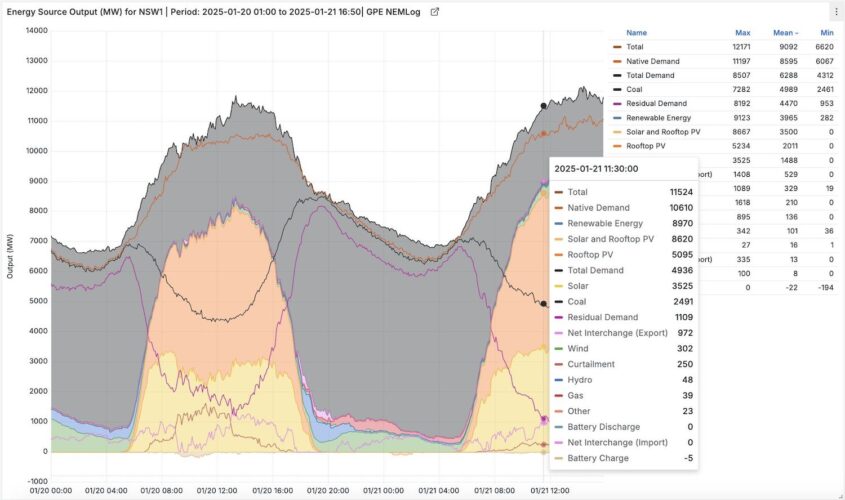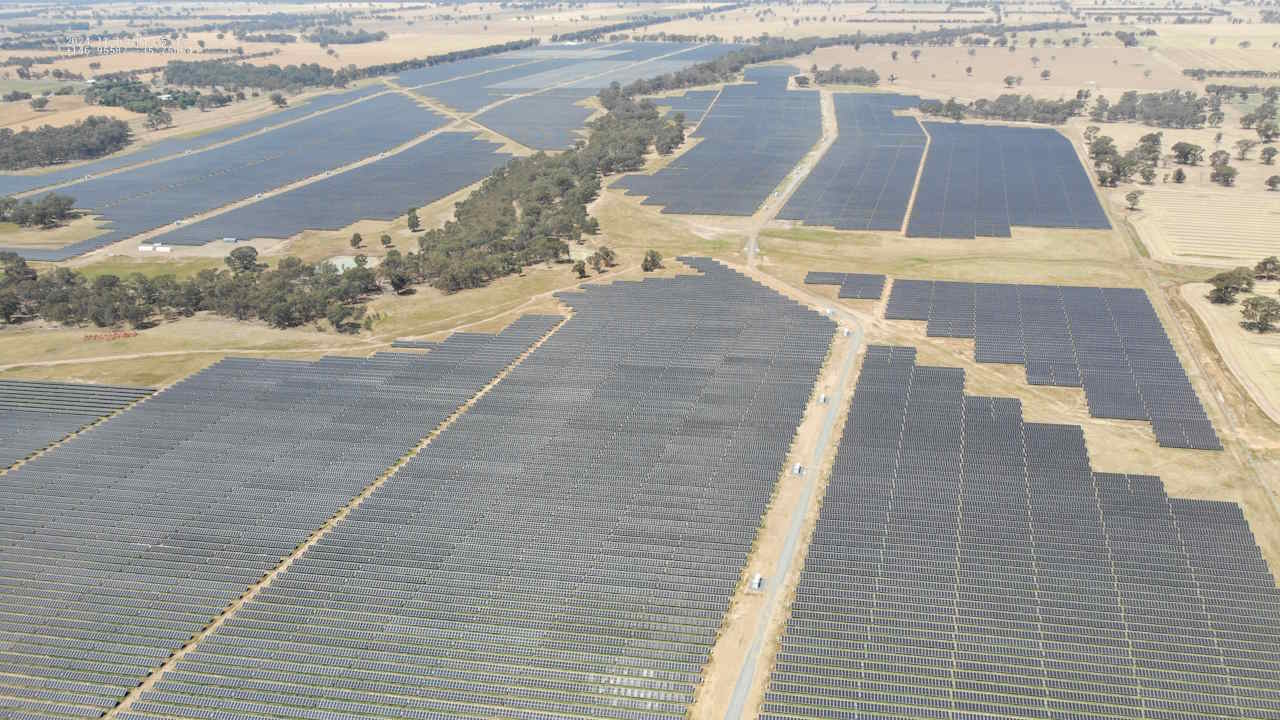New South Wales continues to flex its solar generating muscle in the first month of 2025, this week setting a new all-time PV output record of 3,525 megawatts (MW) – more than 3 gigawatts – at 11:30am on Tuesday.
The new solar record, noted by Global Power Energy’s Geoff Eldrige on LinkedIn, beats the previous 3,448.6 MW from December 20, 2024 by 76.43 MW and, as Eldridge points out, is an impressive 18.1 per cent (539.3 MW) up on the late 2023 record of 2,986 MW on November 18.
The new high follows the milestone achievement in the first week of January, when the utility-scale solar share of NSW demand topped 40 per cent for the first time, reaching 40.5 per cent of generation, surpassing the previous record of 39.9 per cent set in December.
At the same time, as Eldridge notes here, the combination of wind and solar reached 55.9 per cent, exceeding the previous record of 54.7 per cent set in October last year.
“Solar’s rising contribution was pivotal in achieving this combined record, underscoring its role in boosting the overall renewable energy share,” Eldridge said at the time.
In his notes this week, Eldridge says the key drivers of NSW’s recent solar success have been contributions from relatively new solar farms, including the 330MW Wellington North project, which started generating in May 2024, and the Walla Walla 1 & 2 projects, both 150 MW and both commissioned in September of last year.
And he says that the state’s expanding utility-scale solar fleet now competes with behind-the-meter rooftop PV, which further pushes down midday operational demand and limits the grid’s ability to dispatch utility solar to its full potential.
“This is yet to bite but others states experiences show this is a waiting challenge to come,” Eldridge says.

But just as Australia’s biggest coal state continues to reach new highs in solar output, it also remains heavily dependent on its aging fleet of coal power generators.
As Eldridge also points out in detail here, earlier on the same day that solar hit its new high, the NSW coal share hit 100 per cent (6,314 MW) at 2:55am – the highest share since February 09, 2022, when it reached 101.1% (6,251 MW).
“This record reinforces the importance of preparing for non-solar periods as the energy transition accelerates,” he says on LinkedIn.
“Balancing grid reliability, affordability, and sustainability will require a coordinated approach to dispatchable resources, innovative market reforms, and robust planning.”
This is particularly the case as NSW coal plants get older and closer to retirement.
While all 12 NSW coal units have been in-service this summer, and answered the call to meet 100 per cent of demand on this occasion, “over-reliance on aging coal units for non-sunlight hours raises long-term concerns about reliability and sustainability,” Eldridge says.
This is backed up by the findings of brand new Climate Council research on Thursday, that a coal generator’s availability to produce electricity drops dramatically from 40 years of age, decreasing from 81% to 65% on average.
This is worrying, considering the majority (more than 60%) of the coal capacity in Australia’s main national grid is older than 40 years, with some generators in operation since the 1970s.
The report also finds that the majority of recent power outage risk conditions have occurred in New South Wales and Queensland – the states most dependent on coal generators.
Further, coal outages have played the largest role in power outage risk conditions in New South Wales and Victoria – the states dependent on the oldest coal generators.
Coal also has flexibility limits, adds Eldridge, which will really test the aging technology as more and more renewables come online.
“As coal grapples with maintaining minimum outputs during daytime demand troughs, its long-term role faces increasing constraints,” he writes.
What’s needed, he adds, are investments in storage solutions like batteries and pumped hydro, along with demand flexibility initiatives, to balance the growing mix of renewable energy sources and ensure grid stability.
“NSW’s energy milestones reflect both progress and the challenges of the transition, where each step forward highlights the importance of thoughtful planning and innovation,” Eldridge says.










